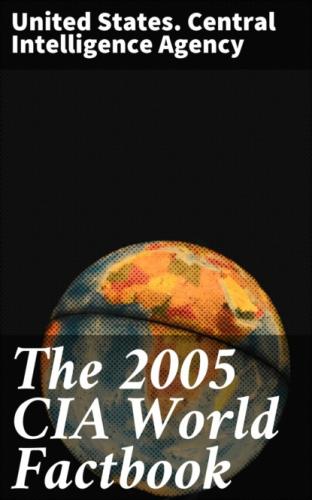Climate:
tropical; hot, humid; more moderate in highlands
Terrain:
mostly coastal lowlands; larger islands have interior mountains
Elevation extremes:
lowest point: Indian Ocean 0 m
highest point: Puncak Jaya 5,030 m
Natural resources:
petroleum, tin, natural gas, nickel, timber, bauxite, copper,
fertile soils, coal, gold, silver
Land use: arable land: 11.32% permanent crops: 7.23% other: 81.45% (2001)
Irrigated land:
48,150 sq km (1998 est.)
Natural hazards:
occasional floods, severe droughts, tsunamis, earthquakes,
volcanoes, forest fires
Environment - current issues:
deforestation; water pollution from industrial wastes, sewage; air
pollution in urban areas; smoke and haze from forest fires
Environment - international agreements: party to: Biodiversity, Climate Change, Climate Change-Kyoto Protocol, Desertification, Endangered Species, Hazardous Wastes, Law of the Sea, Ozone Layer Protection, Ship Pollution, Tropical Timber 83, Tropical Timber 94, Wetlands signed, but not ratified: Marine Life Conservation
Geography - note:
archipelago of 17,508 islands (6,000 inhabited); straddles equator;
strategic location astride or along major sea lanes from Indian
Ocean to Pacific Ocean
People Indonesia
Population:
241,973,879 (July 2005 est.)
Age structure:
0–14 years: 29.1% (male 35,823,456/female 34,590,631)
15–64 years: 65.7% (male 79,447,560/female 79,449,399)
65 years and over: 5.2% (male 5,526,389/female 7,136,444) (2005 est.)
Median age:
total: 26.48 years
male: 26.03 years
female: 26.93 years (2005 est.)
Population growth rate:
1.45% (2005 est.)
Birth rate:
20.71 births/1,000 population (2005 est.)
Death rate:
6.25 deaths/1,000 population (2005 est.)
Net migration rate:
0 migrant(s)/1,000 population (2005 est.)
Sex ratio:
at birth: 1.05 male(s)/female
under 15 years: 1.04 male(s)/female
15–64 years: 1 male(s)/female
65 years and over: 0.77 male(s)/female
total population: 1 male(s)/female (2005 est.)
Infant mortality rate:
total: 35.6 deaths/1,000 live births
male: 40.72 deaths/1,000 live births
female: 30.22 deaths/1,000 live births (2005 est.)
Life expectancy at birth:
total population: 69.57 years
male: 67.13 years
female: 72.13 years (2005 est.)
Total fertility rate:
2.44 children born/woman (2005 est.)
HIV/AIDS - adult prevalence rate:
0.1% (2003 est.)
HIV/AIDS - people living with HIV/AIDS:
110,000 (2003 est.)
HIV/AIDS - deaths:
2,400 (2003 est.)
Major infectious diseases: degree of risk: high food or waterborne diseases: bacterial and protozoal diarrhea, hepatitis A and E, and typhoid fever vectorborne diseases: dengue fever, malaria, and chikungunya are high risks in some locations (2004)
Nationality:
noun: Indonesian(s)
adjective: Indonesian
Ethnic groups:
Javanese 45%, Sundanese 14%, Madurese 7.5%, coastal Malays 7.5%,
other 26%
Religions:
Muslim 88%, Protestant 5%, Roman Catholic 3%, Hindu 2%, Buddhist
1%, other 1% (1998)
Languages:
Bahasa Indonesia (official, modified form of Malay), English,
Dutch, local dialects, the most widely spoken of which is Javanese
Literacy:
definition: age 15 and over can read and write
total population: 87.9%
male: 92.5%
female: 83.4% (2002 est.)
Government Indonesia
Country name:
conventional long form: Republic of Indonesia
conventional short form: Indonesia
local long form: Republik Indonesia
local short form: Indonesia
former: Netherlands East Indies; Dutch East Indies
Government type:
republic
Capital:
Jakarta
Administrative divisions:
30 provinces (propinsi-propinsi, singular - propinsi), 2 special
regions* (daerah-daerah istimewa, singular - daerah istimewa), and 1
special capital city district** (daerah khusus ibukota); Aceh*,
Bali, Banten, Bengkulu, Gorontalo, Irian Jaya Barat, Jakarta Raya**,
Jambi, Jawa Barat, Jawa Tengah, Jawa Timur, Kalimantan Barat,
Kalimantan Selatan, Kalimantan Tengah, Kalimantan Timur, Kepulauan
Bangka Belitung, Kepulauan Riau, Lampung, Maluku, Maluku Utara, Nusa
Tenggara Barat, Nusa Tenggara Timur, Papua, Riau, Sulawesi Barat,
Sulawesi Selatan, Sulawesi Tengah, Sulawesi Tenggara, Sulawesi
Utara, Sumatera Barat, Sumatera Selatan, Sumatera Utara,
Yogyakarta*; note - with the implementation of decentralization on 1
January 2001, the 357 districts or regencies became the key
administrative units responsible for providing most government
services
Independence:
17 August 1945 (independence proclaimed); 27 December 1949
(Netherlands recognizes Indonesian independence)
National holiday:
Independence Day, 17 August (1945)
Constitution:
August 1945; abrogated by Federal Constitution of 1949 and
Provisional Constitution of 1950, restored 5 July 1959
Legal system:
